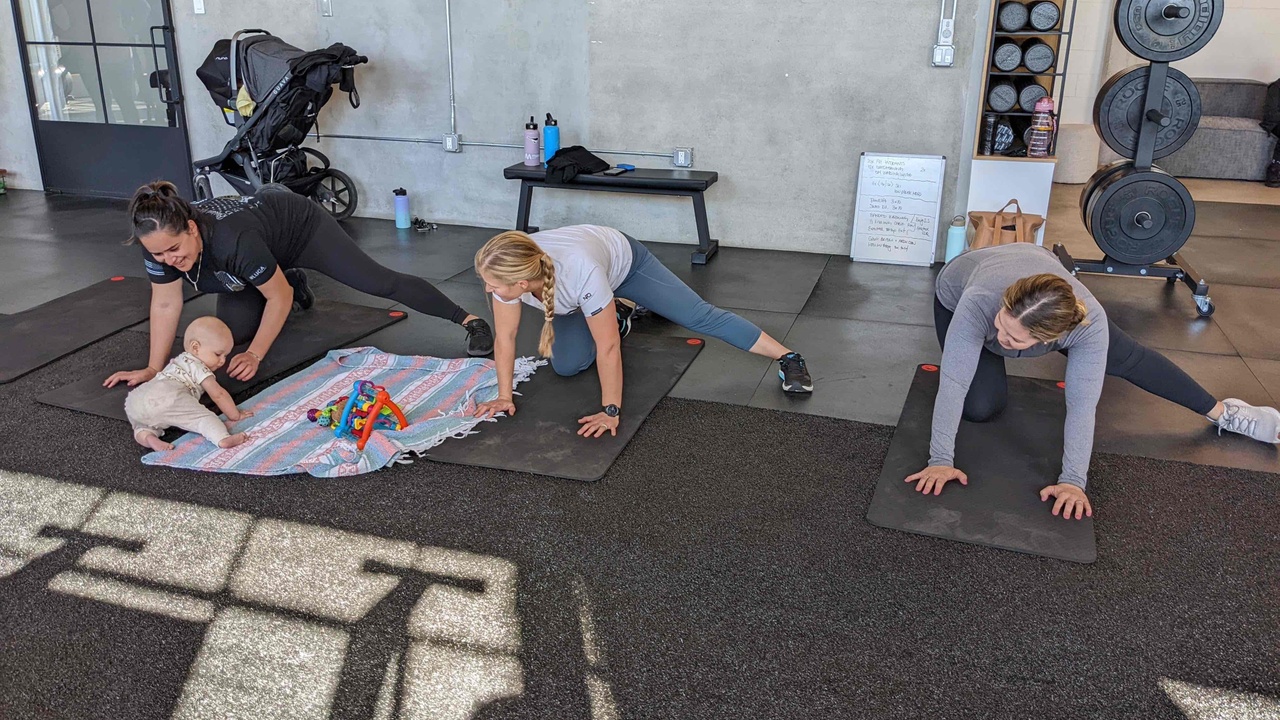How The Body Says, “Too Much!” (And what you can do about it)

During and after pregnancy, there are some special considerations to make when selecting an activity or exercise to do. Whether it’s day to day activities like lifting your kids or whether it’s exercises during a workout, it’s important to recognize these signs to know when it’s time to modify your activity and get in touch with your doctor or physical therapist.
Your core muscles (including the abdominals, pelvic floor and more) go through a lot of changes and have to work extra hard to support the growing fetus during pregnancy and adapt after birthing. In learning more about your body and the sensations it uses to tell you, “this is too much,” you can then learn to stay active in a healthy, supportive way.
BEING AWARE OF THE FOLLOWING SIGNS CAN HELP GIVE YOU CONFIDENCE IN WHAT YOUR BODY IS TELLING YOU.
Sign 1: Pain
If an exercise or activity gives you pain, that’s oftentimes your body's way of asking you to change what you’re doing. It’s important, however, to differentiate this from aches and pains that get BETTER with activity. This is often the case for pain that occurs after a bad night’s sleep, a long day of sitting, or other sedentary activities like computer work. So, when you experience pain, try to observe if it’s from an activity or if activity makes it better. And then, always talk to your doctor and a physical therapist because we can help!
Sign 2: Incontinence
This most frequently comes in the form of leaking with an activity like jumping, laughing or running but other types of incontinence include when you have more of an urgency to urinate and feel like you can’t get to the bathroom fast enough. You also may experience changes like having to go more frequently, having difficulty getting a full void or a change in the stream of urine. If any of these occurs, a pelvic health physical therapist can help!
Sign 3: A Feeling of Heaviness in the Pelvic Region
This can also be described as a “dragging”, “falling out”, or “bulging” of the vagina or pelvic floor. This includes any abnormal sensation in the pelvic region that isn’t necessarily painful, but just uncomfortable. Just because it’s not painful, does not mean it’s not worthy of help! Bring this up with your doctor and a pelvic health physical therapist. Try to take note of when this sensation occurs as it might not be constant. It often is more notable with certain movements and with straining (in the bathroom or during an activity). Recognizing your patterns will help a physical therapist help you!
Sign 4: Diastasis Recti
Diastasis recti is a normal separation of the abdominal muscles at the midline. Hormonal changes allow the tissues along your midline to stretch/ lengthen in order for the belly to grow. You might see a dome or cone like protrusion from the middle of your stomach either above or below the belly button. If this becomes more pronounced with activity, then you’ll likely benefit from learning how to better control the pressure in your abdomen so as not to push out at the midline when straining.
I hope this list helps you recognize the signs and sensations that indicate you may need to modify what you’re doing. Everything on this list falls into the scope of what a physical therapist does best. When finding a physical therapist, try to find one that specializes in pelvic health, women’s health, pregnancy and postpartum, or obstetrics.
Stay connected with news and updates!
Sign up here to be the first to know about new programs, events, and special offers.
Don't worry, your information will not be shared.
We hate SPAM. We will never sell your information, for any reason.


